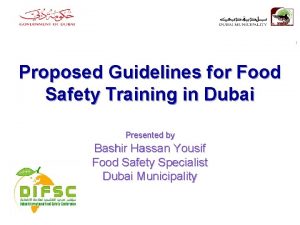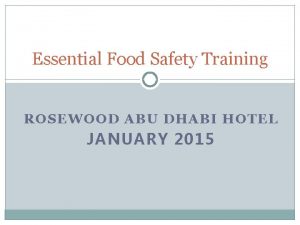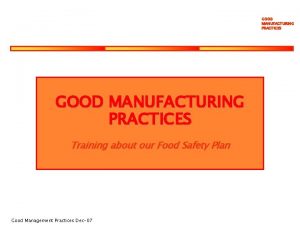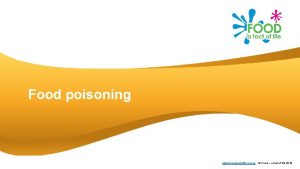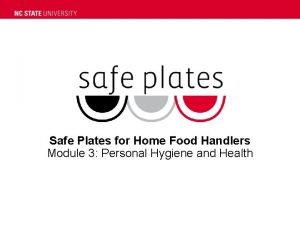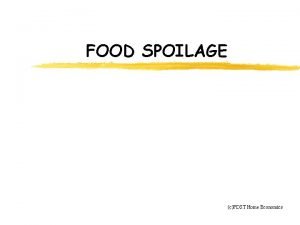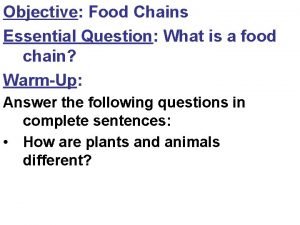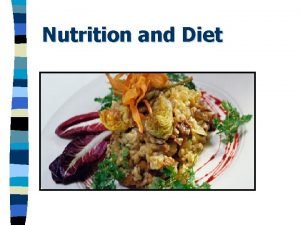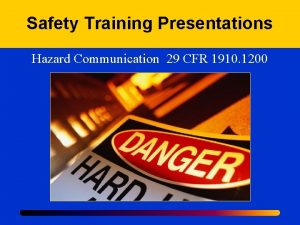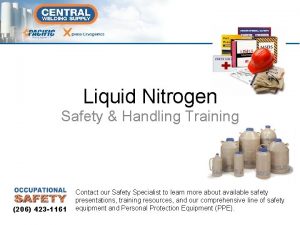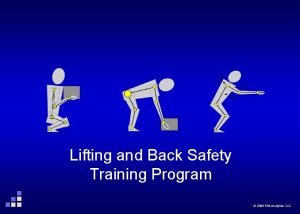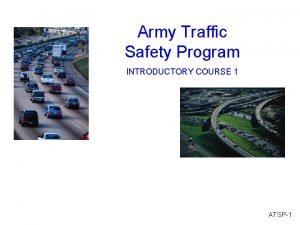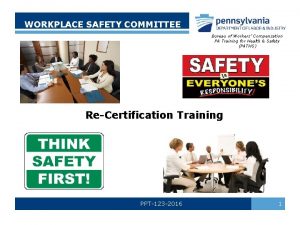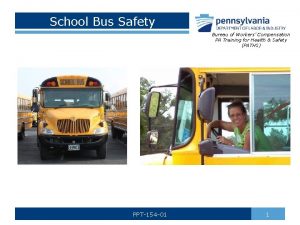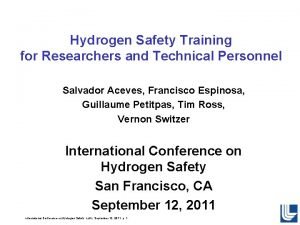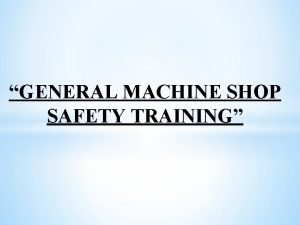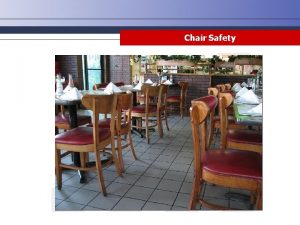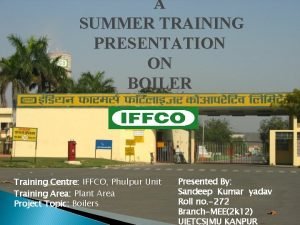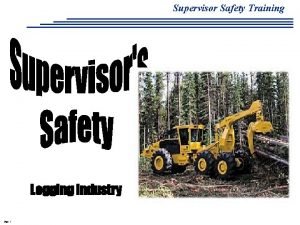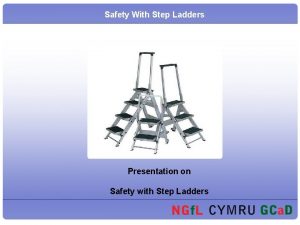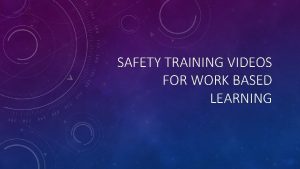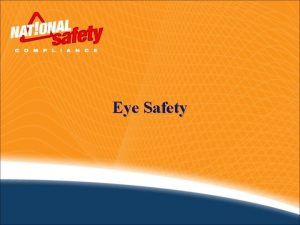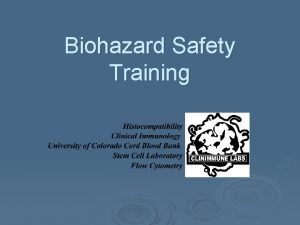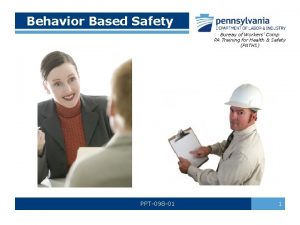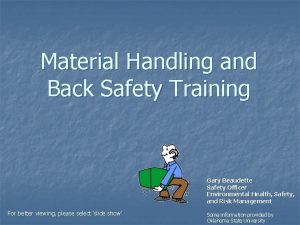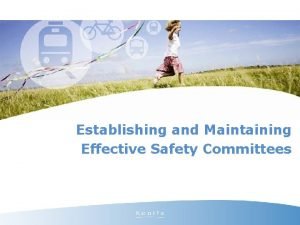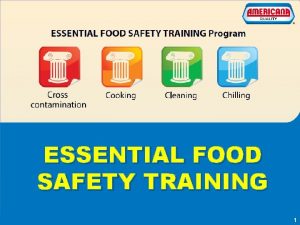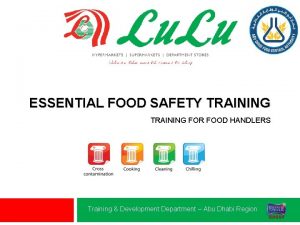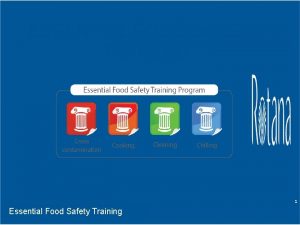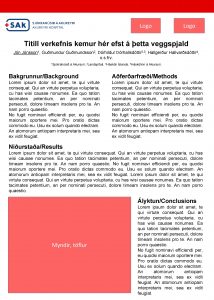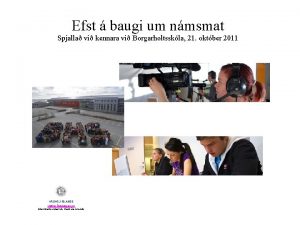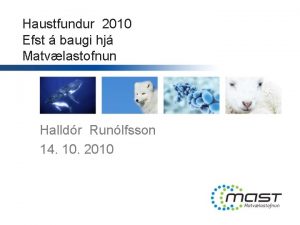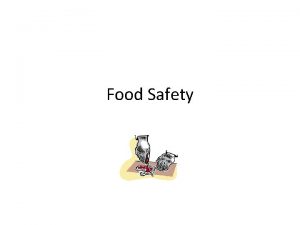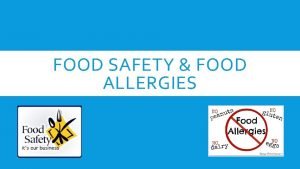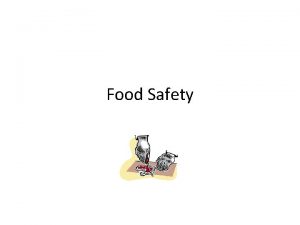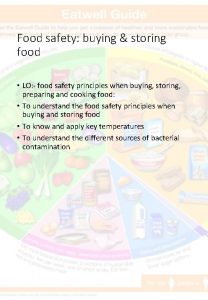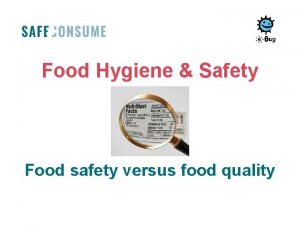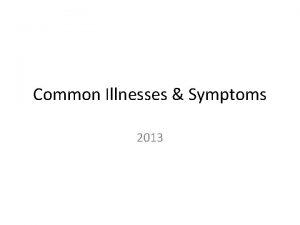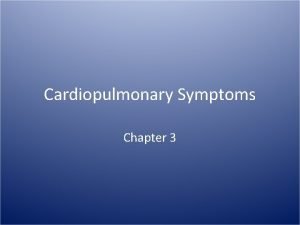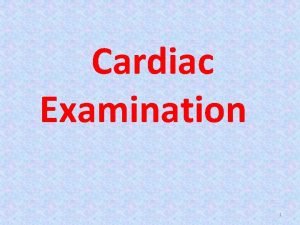Essential Food Safety Training EFST Symptoms of Food
















































- Slides: 48

Essential Food Safety Training (EFST)


Symptoms of Food Poisoning ? ? • • Abdominal pain Diarrhea Vomiting Nausea Fever Collapse dehydration

Bacteria § found everywhere §Few causes illness (pathogens) §Mostly harmless (90%) §Some are essential §Some cause spoilage §microscopic


QUESTIONS RELATED TO BACTERIA:

SPOILAGE BACTERIA VS FOOD POISONING BACTERIA Unlike pathogens, spoilage is detected by our senses SIGNS OF SPOILAGE § Off odors §Discoloration §Slime/stickiness §Mould §Texture change §Taste deterioration §Pest evidence §Rancidity §Production of gas

REMEMBER: A spoiled food caused by spoilage organisms can be slimy, taste bad, smell bad, has color change. A food contaminated by food poisoning bacteria or pathogens look normal, smell, and tastes normal. Pathogens – disease causing microorganism





CE (CLASS EXERCISE) Where should I store it? = refrigerator Sterilized milk (unopened)? Vacuum packed pasteurized milk? Pasteurised canned milk (unopened) UHT milk (unopened) Bananas Cut melon Dry ice cream mix Bottle of tomato sauce (opened) Jar of mayonnaise (unopened) Cooked rice = dry store


CE Which of the following sickness must be reported to supervisors Or • Eaten suspected contaminated food • Septic cuts/boils • Back ache • Bruised arm • Sore foot • Sick while on a holiday • Sunburn • Broken finger • Skin infection • Muscle pain • Diarrhea/vomiting • Food poisoning • Bad cold/ flu • Close family contact has diarrhea, vomiting of food poisoning • Sore eyes







q. Food contact surfaces q. Cutting boards q. Food utensils/equipment q. Preparation surfaces/tables/nearby walls q. Sinks q. Refrigerators q. Hand contact surfaces (door knobs, drawers, fridge handles) q. Faucet taps, wash hand basins, q. Cleaning materials/equipment

What to clean and disinfect CE = clean & disinfect Knives and forks Inside oven Can opener Kitchen or store floors Chopping board Ceiling tiles Wash hand basin Drawer handle Fridge door handle Pans used in cooking windows = clean only Shelves for dry items Shelves for display chillers Juice extractor Mixer Sweeping brush Cleaning cloths Brushes used for wet cleaning Buckets used for cleaning floors Protective clothing

CROSS CONTAMINATION v. When microorganisms or bacteria are carried into food by hands, from food contact surfaces (utensils/equipment) or drip. v. Transfer of bacteria from raw food to cooked food. v raw food touches (or drips onto) other food v raw food touches (or drips onto) equipment or surfaces v people touch cooked food with their hands a

Drip

Direct Contact

Indirect Contact


Note: It is ideal to store raw food and high risk food in a separate cold storage equipment. Paper or grease proof paper and aluminum foils are not allowed to use as packagings for storing FROZEN foods inside Freezer

CE (CLASS EXERCISE) Where should I store it?


Prevention of Cross Contamination 1. Food preparation areas and equipment must be cleaned all the time 2. Use of color coded knives and chopping boards 3. Store raw food separate from cook food or store cooked and ready to eat food up the refrigerator shelf, vegetables in the middle and raw meat at the bottom. 4. Cover all the food stored in chillers or dry store 5. Put date codes

Dead! Destroys most pathogens Too hot (start to die) 63°C 63 °C Multiply (rapidly 20°C - 50°C) Spoilage bacteria (slow growth), most pathogens no growth Dormant (spoilage and pathogens no growth)









PEST CONTROL • Effective pest control is essential to keep pest out of food premises and prevent them from spreading harmful bacteria • Check kitchen and stores regularly for signs of pest • Check deliveries for signs of pest, reject those with gnawed packagings or insect • Keep external areas clean and free from weeds • Make sure bins have close fitting lids and are easy to clean

Maintenance Is necessary in order • To help keeps pest out • Regular maintenance of equipment should be done to improve efficiency • Repair structural damage as soon as it happens (e. g broken tiles, walls, scratches) • Replace chopping boards that are scratched • Throw away cracks or chipped dishes • Ventilator and exhaust fans should be cleaned regularly to prevent grease and dirt from contaminating the food.




What if Food Poisoning will happen to a Hollywood Icon?

 Period cramps in early pregnancy
Period cramps in early pregnancy Qbs safety care
Qbs safety care Essential non essential fatty acids
Essential non essential fatty acids Food safety training in dubai
Food safety training in dubai Food safety training abu dhabi
Food safety training abu dhabi Gmp food safety training
Gmp food safety training Lab safety questions
Lab safety questions What is food safety
What is food safety Food poisining symptoms
Food poisining symptoms Foodafactof life
Foodafactof life Safe plates module 3
Safe plates module 3 3 causes of food spoilage
3 causes of food spoilage Objective of food chain
Objective of food chain N
N Unit 2 food food food
Unit 2 food food food Food chain food chain food chain
Food chain food chain food chain Catzoc ecdis definition
Catzoc ecdis definition Personal safety vs process safety
Personal safety vs process safety Safety assessment for ind safety reporting
Safety assessment for ind safety reporting 00101-15 basic safety
00101-15 basic safety Construction site safety orientation
Construction site safety orientation 29 cfr 1910
29 cfr 1910 Liquid nitrogen safety training
Liquid nitrogen safety training Safety awareness topics
Safety awareness topics Fuel tank safety training
Fuel tank safety training Basic fire safety training ppt
Basic fire safety training ppt Army traffic safety introductory course
Army traffic safety introductory course 15 passenger van training
15 passenger van training Pa safety committee requirements
Pa safety committee requirements Nuclear safety training
Nuclear safety training Ladders and stairways
Ladders and stairways Flagman safety training ppt
Flagman safety training ppt Hydrogen safety training
Hydrogen safety training Pinch point safety definition
Pinch point safety definition Dilbert chair safety training
Dilbert chair safety training Boiler safety training ppt
Boiler safety training ppt Identify hazards
Identify hazards Supervisor safety training topics
Supervisor safety training topics Ladder safety powerpoint
Ladder safety powerpoint Osha safety videos
Osha safety videos Hse culture ladder
Hse culture ladder Backing safety training
Backing safety training Eye safety training
Eye safety training Ecp
Ecp Betaris box
Betaris box Crane training ppt
Crane training ppt Gary beaudette
Gary beaudette Keolis safety training
Keolis safety training Rf safety awareness training answers
Rf safety awareness training answers



